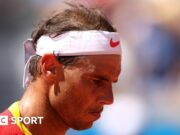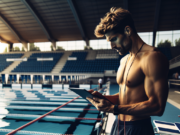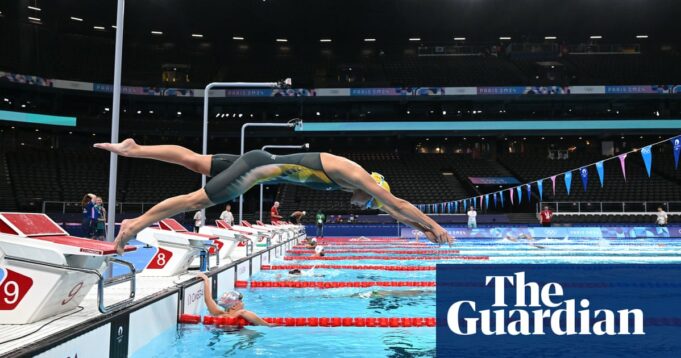Olympic swimming is always thrilling, and it kicks off on Saturday with the heats for the women’s 100m butterfly event. As anticipation grows, many are eager to see if the pool will yield record-setting performances that will highlight the Games.
To begin with, the swimmers will compete in Nanterre, a separate venue from where the divers and artistic swimmers will perform in the impressive £151m aquatics centre in Saint-Denis. While there was much buzz about a versatile pool, swimming events will take place in the Paris La Défense Arena, where two 50m temporary pools have been constructed within what is typically a 30,000-seat rugby stadium.
Swimming in a rugby stadium?
Numerous swimming competitions are hosted in venues primarily constructed for other sports, mainly to maximize spectator turnout. The decision to do this for Paris 2024 has garnered largely positive feedback, with over 15,000 seats available at the venue. “I love the concept of having more and more people watching swimming,” expressed Australian star Bronte Campbell, who will be competing in her fourth Olympic Games. “The larger the crowd, the better. Perhaps they will make enough noise so we can finally hear them underwater.”
Zac Stubblety-Cook from Australia, the reigning Olympic champion in the men’s 200m breaststroke, highlighted the significance of the arena’s size. “Entering this arena, even the pool deck area, is truly remarkable. Having room to move around is a minor detail, yet it’s something everyone has recognized.”
Does the pool really make much difference?
In a competition where the margin between gold and silver can be as narrow as a hundredth of a second, the pool’s conditions can be crucial. The organization behind the La Défense pools has built pools at the last six Olympic Games. Strict World Aquatics regulations dictate technical elements like pool depth and lane rope width. The record-breaking 25 from Beijing 2008 set a high benchmark for a fast pool.
Will a shallower than usual Olympic pool slow down the swimmers in Paris? Photograph: Dave Hunt/AAP
So what makes a pool fast or slow?
You’ve probably heard about how an athletics track can influence performance, with Paris’ new purple track claimed to be 2% faster than the one in Tokyo; similarly, the composition of a swimming pool can affect speed both psychologically and scientifically.
Four key factors contribute to a pool’s speed. First, the water depth should be ample enough to minimize wave impact on the pool bottom, which can create turbulence, yet shallow enough for swimmers to see the bottom as a reference for their speed. Traditionally, an Olympic standard of three meters is considered the ideal depth. Water temperature must comply with World Aquatics guidelines, remaining between 25°C and 28°C, allowing swimmers to warm-up properly without overheating.
Next, gutters must be sufficiently large to counteract waves affecting the pool’s sides. If the gutters are too narrow, swimmers in the outer lanes could be more susceptible to turbulence. To maintain a fair competition, the outer two lanes are typically left unused during the Olympics. Lastly, non-slip starting blocks enable swimmers to make strong starts.
So will Paris 2024’s pool be quick?
The pool is shallower than the traditional 3m standard, at 2.30m, which has raised some concerns regarding its impact. The starting platforms feature fins designed to help swimmers push off strongly at the start. One of the notable athletes of the Games, swimmer Léon Marchand, has expressed confidence it will meet expectations. “The pool is fantastic,” he said. “I loved how it felt in the water; the depth is consistent throughout. You feel as if you’re swimming fast, and that’s exhilarating. It’s a beautiful pool.” If swimmers feel fast at La Défense, we might witness some new world records.



































